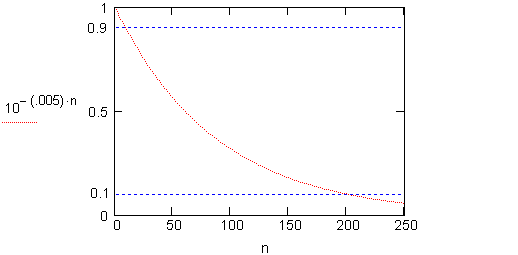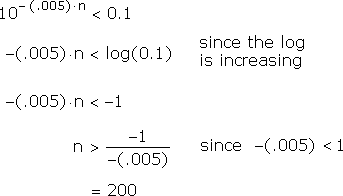 When observing a sequence of outputs in application, we frequently ignore transient fluctuations in the values with a view towards long-term behavior.
When observing a sequence of outputs in application, we frequently ignore transient fluctuations in the values with a view towards long-term behavior.
Transient & Long-Term Behaviors
 When observing a sequence of outputs in application, we frequently ignore transient fluctuations in the values with a view towards long-term behavior.
When observing a sequence of outputs in application, we frequently ignore transient fluctuations in the values with a view towards long-term behavior.
For example, the value of an investment may vary widely before finding its true market value. A machine may go through temporary gyrations when it is first turned on. A prodigal son, to his mother's delight, may eventually settle down.
If we are describing a sequence in mathematical terms, transient behaviors are those that occur for only some initial, finite number of inputs. Long-term behaviors are those that occur eventually, for all large inputs.
As an example, consider the sequence with the general term
0.989, 0.977, 0.966, 0.955, 0.944, ...
These terms all have the property that
This same sequence has the long-term property that

It isn't difficult to see when the sequence drops forever below 0.1 :

Thus, this sequence has the property that
In fact, this sequence has the long-term property that
|
|
|
|
| Back to Contents | ||